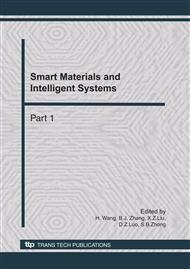p.1017
p.1022
p.1027
p.1031
p.1036
p.1041
p.1046
p.1051
p.1056
Study on Compression Sensing Algorithm for Mobile Robot Localization
Abstract:
Redundant data and extra time cost are always exist when the autonomous mobile robot gathers and calculates localization information, using the Nyquist sampling theorem to calculate the sampling time. So an algorithm is studied in this paper, which can dynamically update the sampling period and eliminates the multi-sensor redundant information. Firstly, the observation matrix is renewed timely, according to the real-time state of the robot and the confidence level of sensing information, and the sampling period of sensor can be obtained by the weighted average and normalized method. Secondly, the multi-sensor information will be compressed by the spatial information relevant principle. Simultaneously, the fidelity degree of localization information is monitored timely by the variation function and the compression reliability. Experimental results indicate that this compression sensing algorithm can not only reduce the redundant localization information, but also can guarantee the validity of the localization information.
Info:
Periodical:
Pages:
1036-1040
Citation:
Online since:
October 2010
Authors:
Keywords:
Price:
Сopyright:
© 2011 Trans Tech Publications Ltd. All Rights Reserved
Share:
Citation:


